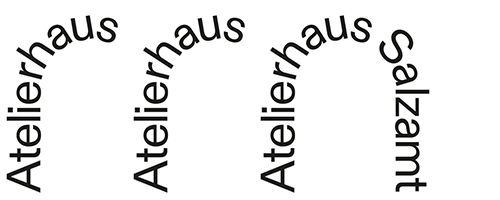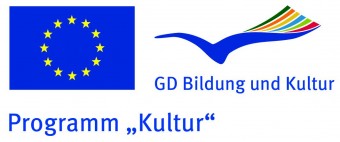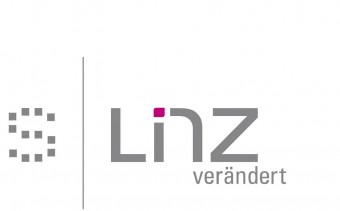1. Mobility in the visual arts sector – Report
Expert talk/Workshop “Mobility in the visual arts sector in Europe” within the EU-project “Urban Interventions” in Linz.
On December 10th and 11th at the Atelierhaus Salzamt in Linz, 30 representatives of European artist organisations, artist residencies and consulting offices as well as scientists discussed about existing mobility obstacles and the question how transboundary work for fine artists could be simplified and on which political level suggestions must be developed.
The talks have been divided into four topics, as “taxes and duty”, “visa regulations”, “information and consulting” and “promoting instruments”.
Besides the organisers within the EU-project “Urban Interventions”, the European holding organisations Culture Action Europe – The European Forum for the Arts and Heritage (www.cultureactioneurope.org) and the IAA Europe (www.iaaeurope.eu) have been acquired as cooperation partners.
Already beforehand the event a lot of artists organisation websites (member organisations of the IAA-Europe and the European Council of Artists (www.eca.dk)) as well as important networks (like On The Move (http://on-themove.org) and the PRACTICS-Infopoints Wales Arts International (www.wai.org.uk), SICA (www.sica.nl), Kunstenloket (www.kunstenloket.be) and Interarts (www.interarts.net)) suggested the IGBK-initiative.
The IGBKs European wide published “Call for Obstacles” implicated, that the experiences of European artists with handling international projects could be included in the discussion.
Besides others even the UNESCO adverted the project (http://portal.unesco.org/culture/en/ev.php-
URL_ID=39875&URL_DO=DO_PRINTPAGE&URL_SECTION=201.html)
Subsequently the IGBK acquired an extensive report, respectively a letter of recommendation, (http://igbk.de/fileadmin/media/pdf/challenges_for_mobility_recommendations_from_the_visual_arts_sector.pdf), which includes specific suggestions regarding the improvement of the mobility of fine artists.
The paper has already been incorporated in the work of the OKM (open coordination methods) workgroup, dealing with the mobility of artists and cultural workers in the EU, in January 2010. The head of this workgroup, Risto Kivelä from Finland, was one of the attendants in Linz. Therefor it was ensured, that the results are discussed and communicated on a European and national level.
The European-Asian art and culture portal “culture360.org” published a detailed report short after the event.
(http://culture360.org/perspectives/solutions-for-the-mobility-of-visual-artists-ineurope).
More links and information is to be found on the project website: http://igbk.de/projekte/challenges-for-mobility-2009
2. Mobility in the visual arts sector – Concept
As part of the EU project ‘Urban Interventions: Artistic perspectives for the urban space’ and hosted by Atelierhaus Salzamt in Linz, IGBK will organise an experts’ meeting on the topic ‘mobility in the visual arts sector in Europe’ on December 10 and 11, 2009.
The topic ’mobility of artists and cultural professionals’ enjoys great popularity at European level. It has been a priority of the Culture Programme since 2000 and has been further reinforced as a specific objective of the Culture Programme for the period 2007 – 2013: As part of the Open Method of Coordination among EU Member States, an expert working group on the ‘mobility of artists and other professionals in the cultural field’ was set up in March 2008. Also ‘mobility’ is a cross-cutting theme in the three civil society platforms (Access to Culture, Cultural Industries and Intercultural Dialogue).
The European Commission commissioned the study ‘Mobility Matters. Programmes and Schemes to Support the Mobility of Artists and Cultural Professionals’ which was submitted by ERICarts in October 2008. The study ‘Information systems to support the mobility of artists and other professionals in the cultural field: a feasibility study’, commissioned by the DG Education and Culture, was conducted by ECOTEC Research & Consulting Ltd in March 2009.
The ‘Call for proposals for the networking of existing structures supporting mobility in different cultural sectors’ was published in June 2008 by the Commission and finally four projects (‘e’mobility’, ‘practics’, ‘space’ and ‘changing room’) were selected for co-financing. A call for proposals on ‘Support to Transnational Mobility Programmes or Schemes in the Field of Culture’ was launched by the DG EAC.
IGBK and its project partners will bring together an experts’ round to focus on the visual arts sector, to outline specific experiences and demands of visual artists in particular.
Besides the discussion on how to further develop and coordinate existing funding and supporting schemes, priority will be given to the reduction of obstacles and to the question on how to make things easier for individual artists and groups. This is as to e.g. transparency and harmonisation of procedures and application forms in fiscal and social matters, to the simplification of cross-border transportation, to the reduction of visa problems and costs, to the launch of a European identity card for visual artists. Furthermore the important topic ‘access to information and knowledge’ will be discussed as well as the unequally distributed opportunities for artists in different countries.
The outcome of the expert meeting will on the one hand be a recommendation catalogue that will be handed over to the relevant EU political bodies. (The OMC working group on the ‘mobility of artists and other professionals in the cultural field’ will prepare a final report on the implementation of the Council Work Plan for Culture 2008-2010 by the end of 2010.)
Also the meeting is scheduled as a ‘strategy meeting’ that aims at developing further steps on how to reduce obstacles and how to deal with the problems within the different European countries.
As a first step IGBK launches an open ‘Call for Obstacles’. Visual artists are invited to hand in concrete obstacle experiences and demands related to mobility and exhibitions/exchange projects. The collected statements will provide a basis for the experts’ meeting. Furthermore the output of the ‘e.mobility.how to make mobility easier for artists’ webpage (www.e-mobility-forum.forumactif.net) will be taken into consideration.
The expert round itself, about 25 participants, brings together visual artists (delegates of artists’ associations and of smaller informal structures and artist-run initiatives) as well as practitioners in the field of artists’ residencies. European/international organisations like the International Association of Art (IAA) Europe, the European Council of Artists (ECA), ResArtis, Trans Artists etc are invited.
In addition experts who can build on existing studies and (pilot) projects (< on-the-move >, ’Mobility Matters’, ‘Information systems to support the mobility of artists and other professionals in the cultural field: a feasibility study’, ’Survey on the legal instruments affecting international mobility of artists’, ’Practics. Make Culture Move’) take part in the meeting.
Members of the European Commission (DG ‘Education and Culture’ and DG ‘Taxation and Customs’), the European Parliament (Education and Culture Committee) and the OMC working group ’Mobility of artists and other professionals in the cultural field’ are invited. Culture Action Europe. The European Forum for the Arts and Heritage is partner of the event.
3. Mobility in the visual arts sector – Participants
experts
Michael Burke, European Council of Artists (Copenhagen), Visual Artists Ireland (Dublin)
Clymene Christoforou, Culture Action Europe (Brussels), ISIS Arts (Newcastle)
Paul Domela, Liverpool Biennial (Liverpool) – project partner
Karol Frühauf, ResArtis (Amsterdam), BridgeGuard Residence Stúrovo (Stúrovo)
Gerhard Stöger, Wirtschaftskammer Oberösterreich (Linz)
Holger Jagersberger, Atelierhaus Salzamt (Linz) – project partner
Risto Kivelä (Helsinki), Open Method of Coordination Working Group: Mobility of Artists and Other Professionals in the Cultural Field
Daniela Koweindl, IG Bildende Kunst (Vienna)
Alex Meszmer, International Association of Art (IAA) Europe (Athens), visarte (Zurich)
Richard Poláček (Prague, Brussels), researcher, Consultant for European Affairs
Rona Rangsch (Dortmund), artist
Werner Schaub, Internationale Gesellschaft der Bildenden Künste (Berlin) – project partner
Peter Schmieder, Künstlerhaus Dortmund (Dortmund) – project partner
additional participants second day
Geoffrey Brown, EUCLID (Manchester)
Natalia Cehlariková, Zusana Duchová, Cultural Contact Point Slovakia (Bratislava)
Peter Tomaz Dobrila, Ministry of Culture Slovenia (Ljubljana)
Anja Jelavić, Križana Brkic, Cultural Contact Point Croatia (Zagreb)
Meena Lang, ECP Austria, Bundesministerium für Unterricht, Kunst und Kultur (Vienna)
Mateja Lazar, Ines Kežman, Cultural Contact Point Slovenia (Ljubljana)
Bettina Leidl, Kunsthalle Wien, Open Method of Coordination Working Group: Mobility of Artists and Other Professionals in the Cultural Field (Vienna)
Elisabeth Pacher, CCP Austria, Bundesministerium für Unterricht, Kunst und Kultur (Vienna)
Katharina Riediger, The Education, Audiovisual and Culture Executive Agency (EACEA) (Brussels)
Aleksandra Widhofner, Bundesministerium für Unterricht, Kunst und Kultur (Vienna)
moderators
Judith Staines, < on-the-move > (Brussels)
Maria Tuerlings, Trans Artists (Amsterdam)
rapporteurs
Sylvia Amann, InfoRelais (Engerwitzdorf/Austria)
Thomas Weis, Christine Heemsoth, Internationale Gesellschaft der Bildenden Künste (Berlin)
4. Mobility in the visual arts sector – Schedule
Thursday, 10 December 2009
Kepler Salon (Rathausgasse 5, 4020 Linz)
4pm Welcome
Holger Jagersberger (Atelierhaus Salzamt)
Werner Schaub (Int. Gesellschaft der Bildenden Künste)
Session I: Customs and taxation (4.15pm – 5.45pm)
Statements by Alex Meszmer (IAA Europe / visarte)
Gerhard Stöger (Wirtschaftskammer Oberösterreich)
Werner Schaub (Int. Gesellschaft der Bildenden Künste)
Coffee break
Session II: VISA regulations (6.15pm – 7.45pm)
Statements by Daniela Koweindl (IG Bildende Kunst)
Michael Burke (European Council of Artists / Visual Artists Ireland)
8pm Reception at Kepler Salon
Friday, 11 December 2009
Atelierhaus Salzamt (Obere Donaulände 15, 4020 Linz)
9.30am Start
Session III: Information. Coordination and access (9.30am – 11am)
Statements by Richard Poláček
Mateja Lazar (Cultural Contact Point Slovenia / Artservis)
Session IV: Supporting schemes (11am – 12.30am)
Statement by Karol Frühauf (Res Artis / Bridge Guard Residence Štúrovo)
Lunch break
1.30pm – 3pm Summary and further steps
Summary by Judith Staines and Maria Tuerlings
Feedback from
OMC working group ‘Mobility of Artists and Other Professionals in the Cultural Field’ – Risto Kivelä
3pm Closure
5. Mobility in the visual arts sector – the artist’ s voice
‘In the summer of 2007 I was happy to be selected, as only Belgian artist, for the International Art Exhibition Nord Art 2007 (June 10 – September 30 2007) Carlshütte Büdelsdorf, Germany. To transport the 4 selected paintings I had to rent a lorry to bring them to the exhibition, pay for fuel and kilometres (about 1500 km to bring them, 1500 to get them back, and 1500 to go to the opening). ’Being selected’ actually meant a cost of about 3,000 euro for me, production and materials for the artwork and the time spent on transport not included. I did not take insurance for the transport.
Now, of course, I think twice before applying for an international exhibition.’
( Belgium)
‘I would be very happy about a guideline concerning this matters [customs regulations], as I always feel like acting illegally and that doesn’t feel right.’
(Switzerland)
‘At the beginning I always filled in a Carnet ATA and deposit a bank guarantee. A Carnet ATA is expensive and also the bank guarantee is not for free … it takes time to fill in the x copies of lists of art works, to have them stamped, to have the carnet opened by the customs authorities, to wait again for the customs officers when crossing the frontier and, and, and. The customs officers never really know how to handle these art things, as the Carnet ATA is not earmarked for art works. Another option does not exist, unless you make a list of art works for the customs authorities at the frontier and deposit money (30% of the value (?)). Often the customs officers just don’t know what to do then. […]
Once I crossed the frontier without any Carnet ATA and without any lists of art works and returned with the works later on. The gallery owner in Mannheim (Germany) told me that I am allowed to export and to bring in own art works myself up to a certain amount. To bring something back to Switzerland isn’t a problem, as long as it is own art works which is easy to demonstrate. Once at the costumes in Basel a German customs officer asked me, what I’d like to carry along. I said: my painting. She said: you should declare this. Otherwise you will get in trouble when returning to Switzerland. I said: no, I know that there will be no problems with the Swiss customs authorities. She said: ok then, have a good trip! That shows that the officers just don’t know the regulations. A solution is badly needed.’
(Switzerland)
London based Visiting Arts in partnership with The Delfina Foundation initiated and launched a new scheme called Artist-to-Artist International 2009. The 2009 scheme has a geographic focus by inviting artists from across the Middle East and North Africa. Among others a young female Kurdish-Iraqi artist was invited and was refused a visa one week before she was due to be in the UK. She had to travel nearly 900km to Beirut with her father to get her Biometric ID, and to submit her application in person, and had to stay in Beirut for over 3 weeks to await a decision regarding her visa application, at her family’s own personal expense.
(Iraq)
‘In April 2007, I was denied an entry visa to the UK, even though I had official invitations to do a solo exhibition at Blow de la Barra Gallery London and to perform at Revisions of Excess Festival in Birmingham. After collecting all the required paperwork and fees of over $200, the visa was denied by the British Consulate in New York on the grounds that I was going to seek an illegal employment and sell my work in the UK. Even after the organizers of the Birmingham festival arranged a temporary work permit, I was still denied entry to the UK. On June 1, 2007, upon arrival from Berlin, I was detained at London’s Luton airport based on technicalities of my status. I was separated from my American partner and collaborator, interrogated, photographed and fingerprinted, held over night in a jail cell behind a two-way mirror and then deported back to Berlin the following morning. As a result, I was banned from re-applying for another entry visa for the next 6 months. Needless to say, my first solo exhibition in London opened in my absence.’
(Russian artists, permanent resident of the USA)



